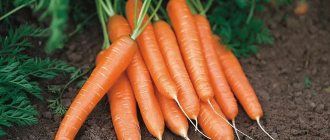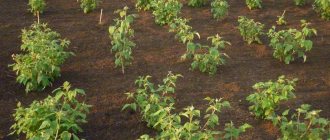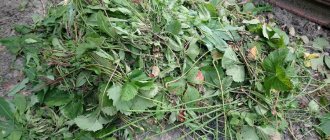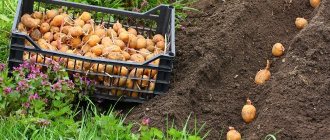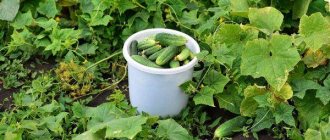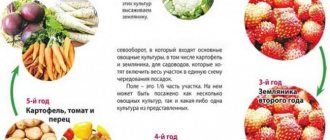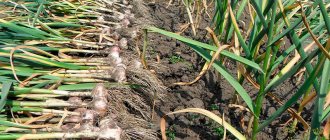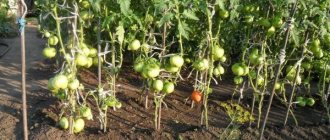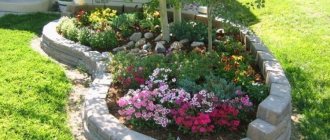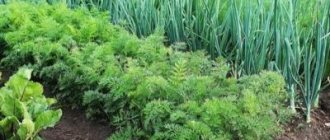Why is crop rotation needed?
Seasonal alternation of the location of vegetables in open ground or a greenhouse is a successful option for productive cultivation. Knowledge of the crop rotation system and their effective application ensures rational use of the site without aggressive depletion of the soil. In addition, changing the sowing locations allows you to naturally get rid of colonies of pests that “specialize” in certain crops and are grouped en masse in their habitual locations.
What soil and conditions are needed for pepper?
Pepper is a heat-loving crop, but it is successfully grown in open ground by summer residents of the Urals and Siberia. The crops they manage to grow are amazing. Not everyone can boast of the results, but only those who know what kind of soil is needed for a capricious plant and what conditions pepper needs for flowering and fruit set.
The roots of the plant are located close to the surface, most of them are concentrated at a depth of 15-30 cm. In order for the pepper to form a powerful root system before fruiting, it must be planted in soil with a high humus content, low salt content, normal acidity level, optimal pH values 6.0-7.0. You can find out whether the soil in your garden is suitable for growing peppers from the table.
| Soil type | Not really) |
| black soil | Yes |
| podzolic, sod-podzolic | No |
| meadow (chernozem, turf) | Yes |
| salt marshes | No |
| forest gray | Yes |
| peat bog | No |
Peppers growing on soil suitable for its structure and fertility are distinguished by a powerful above-ground and underground part. The bushes grow strong, bloom and bear fruit abundantly. All thanks to strong roots, the yield depends on them.
It is necessary to determine the acidity of the soil for peppers. Litmus paper will do if you don’t want to spend money on a special device. A soil sample should be taken at a depth of 20 cm. Ways to reduce acidity:
- Lime-Gumi is added at 200 g/sq.m. m;
- add ash - 1.5 kg/sq. m;
- use dolomite flour 500 g/sq.m. m.
High-moor peat is added to soil that has an alkaline reaction - 1 kg/sq. m or ammonium sulfate - 40 g/sq. m.
Even on fertile soil, peppers can be harmful: they lose color and ovaries. Such vagaries occur among gardeners who water peppers incorrectly.
- Pepper does not respond well to heavy moisture.
- Due to lack of oxygen, his development slows down.
- Dry soil causes fallen ovaries.
For normal fruiting of peppers, it is necessary to maintain soil moisture of 80-90%.
Advice! Buy a special tester with two functions: measuring humidity and determining acidity. Having such a device, you can count on good harvests.
To ensure that the soil is loose and allows moisture and air to pass through well, when digging, add the following:
- sand in clay and loamy soil;
- peat, humus, compost in sandy soil.
Soil fertility is increased with the help of organic fertilizers: sapropel, compost, humus, rotted sawdust. The main thing to remember is that when growing peppers, do not add fresh manure to the soil!
What crops can be planted after pepper next year?
May be interesting Aphids on peppers: how to treat them, effective means The best varieties of hot peppers: descriptions with photos, characteristics What cannot be planted after pepper next year, and what can be planted
All peppers, without exception, are strong plants with an extensive root system that grows in breadth rather than in depth. The main nutritional base is located close to the surface (10-15 cm). That is why it is recommended to plant deep root crops of an unrelated group after pepper:
- carrot;
- beet;
- radishes and radishes;
- daikon;
- turnip.
After pepper, various types of cabbage (cruciferous family) also grow well, including broccoli, cauliflower, and Beijing cabbage.
Important!
To neutralize the negative impact of peppers on the soil before planting other vegetables, it is advisable to treat the area with a fungicide, such as Fundazol.
After what to plant garlic?
In the greenhouse
After bell peppers, it is undesirable to plant all nightshades, that is, potatoes, tomatoes, eggplants, peppers (bell and capsicum), and tobacco. They are all attacked by the same parasites and diseases. Also, after peppers, pumpkin plants do not develop well in the garden.
This is due to the fact that these crops require the same micro- and macroelements in the soil. Consequently, after the pepper takes as much of the required substances from the ground as possible, the pumpkin crops will lack them. As a result, they will starve and their productivity will suffer. In addition, cucurbits are susceptible to toxins left by peppers in the soil.
Many people think about what to plant after garlic next year in their garden plots in the Moscow region. Everyone knows that it is absolutely forbidden to plant the same crop in one place. It is necessary to give the soil the opportunity to restore its mineral balance. The same thing happens with garlic. But if you find a competent approach to planting crops, you can get high yields every year.
Note. The most important thing is planting planning. It is necessary to record what has already been planted in a particular area, and what is only planned to be planted. A notepad with a sewing shift table will help with this.
So what can you plant after garlic? First of all, these are legumes. They are able to quickly restore the entire balance of minerals used by garlic. There are gardeners who always alternately plant garlic and cucumbers in the same area. Thus, cucumbers enrich the soil with nitrogen, which is necessary for the normal growth of garlic.
We suggest you read: How to make a sliding polycarbonate greenhouse
In addition, it should be taken into account that crops that belong to the same species cannot be planted after each other. For example, it is strictly forbidden to plant potatoes after tomatoes, carrots after dill, and zucchini after cucumbers. This is explained by the fact that such alternation will not bring any benefit and will greatly deplete the soil.
Planting garlic
To the question: is it possible to plant onions after garlic, there is a fairly simple answer. No. Since onions and garlic are plants belonging to the same family, they deplete the soil. First of all, because they feed on the same minerals. In addition, their root system is at the same level in the upper layers of the earth.
Also, do not forget about diseases and pests. Vegetables belonging to the same family are vulnerable to the same diseases and, accordingly, are affected by the same pests. However, you should not think that after winter all bacteria or pests will die. They will quietly overwinter in the soil and wait for a new planting and food for themselves.
Some farmers will wonder whether it is possible to plant carrots after garlic? In this case, it is possible, since the roots of carrots go deep to a considerable depth, and when applying fertilizer to the plant, not all of the fertilizer is used up. Thus, the soil is enriched. In addition, these plants help each other grow and develop. First, garlic protects carrots from pests, while red queen enzymes help the garlic cloves grow and develop.
It is recommended to alternate the so-called tops and roots. In this case, minerals will accumulate in the soil much faster. That is why you need to take a smart approach to planting vegetables on your site. In addition, you need to sow high-quality seeds, taking into account their shelf life and germination.
In most cases, the change from one culture to another occurs immediately. It should be noted that winter garlic is harvested in July. Therefore, already in August you can have fresh herbs on the table. You can grow another crop before the end of the season. But what can you sow after garlic immediately after harvesting?
Important! When selecting a garlic substitute, you should take into account the fact that this crop is very specific, so the list of followers will be very meager. In addition, you cannot plant garlic after garlic, as well as onions.
Before cultivating the soil after garlic, you need to take into account the fact that crops that can be planted after garlic are divided into two groups:
- those that can only be planted in spring;
- those that can be planted immediately.
When choosing a crop, you need to take into account its growing season. If there is nothing to plant in the garden bed, then you can sow green manure.
Next season, the following crops can be planted in the garlic bed:
- potato;
- strawberry;
- tomatoes;
- cucumbers;
- beet;
- pumpkin;
- pepper;
- carrot.
When planting beets and cabbage, you need to take into account that they are not entirely suitable for soil after garlic, but, nevertheless, they will grow well in this bed. In addition, sowing greenery will be successful.
Planting beets
In addition, if garlic is planted in open ground along with the vegetables listed above, it will serve as protection for them against pest invasion. Insects that do not tolerate this crop include:
- aphid;
- mole cricket;
- carrot fly;
- May beetle larvae;
- Colorado beetle.
In summer, young garlic can even serve as protection against some diseases. For example:
- black spot;
- powdery mildew;
- gray rot.
In addition, this culture will perfectly help flowers grow and develop in the garden. It is very useful to plant it next to:
- roses;
- gladioli;
- carnations.
If you spray roses with garlic solution, you can get rid of insects that parasitize this flower. Flowers such as calendula and chicory, on the contrary, protect the vegetable from the invasion of pests such as the onion fly. The vegetable also goes well with horseradish; they bring great benefits to each other.
Onion fly
Strawberries planted next to a bed of garlic will grow healthy and will not suffer from fungal diseases. But in this case, garlic will also benefit from such a neighborhood, since strawberries will contribute to the development of large heads in the vegetable. Siderites such as wheat, rye, barley are recommended to be planted both before and after planting garlic. With their deep roots, they perfectly fluff up the soil, while enriching it with useful substances.
Important! Green manure is best grown immediately after harvesting, since by autumn they will have completely prepared the soil for planting vegetables next year. In this case, it is necessary to disinfect the soil.
As you can see, winter garlic is a crop that helps some plants develop and bear fruit. Therefore, experts recommend planting vegetables in a checkerboard pattern, including this crop.
Everyone knows that garlic is very beneficial for the human body, and this advantage is not the only one. After harvesting, you can safely plant other vegetables, excluding onions. But you need to properly prepare the area for new sowing. First of all, the soil is carefully dug up, while simultaneously treating it with copper sulfate, fungicides and insecticides.
Naturally, you need to add fertilizer. Only after these works can be considered that the area is ready to accept a new culture. When cultivating a vegetable garden, you need to take into account that crop rotation is the most important factor for obtaining high yields. The soil must rest and gain strength, but at the same time not become empty.
After you have found out what can be planted after garlic, and also what grows well with it as a neighbor, you can talk about what still cannot be sown in the garden after this vegetable. Naturally, any plant will not die and will even begin to bear fruit, but this harvest will differ significantly from what was expected.
So, in the garden where garlic grew, under no circumstances should you plant:
- Re-garlic or onion;
- Peas and beans will not feel well next to this bed. Naturally, such planting is not strictly prohibited, but it is still better to refrain, especially if the garden is large and there is enough space for planting various vegetables;
- You should not use cabbage as a substitute. Although it will grow, it will not bring the expected results. It is still better to replace it with some other vegetable.
In principle, you can plant any vegetables after garlic; there are no special restrictions. Still, it is advisable to plant crops in such a way that they do not interfere with each other, but, on the contrary, are beneficial.
On a note. If a gardener wants his garden bed to look like the picture, then it is advisable to follow the recommendations of experienced specialists. Moreover, this vegetable is used in every kitchen as a seasoning. If you plant it correctly, you can reduce the time and effort required to care for this plant.
In practice, most gardeners do not use drugs to kill pests and prevent plant diseases if everything is done correctly when cultivating the garden. And at the same time they have excellent yields. It is especially necessary to demonstrate such knowledge for those who have a very small plot of land, and everything is practically planted on it closely.
We suggest you read: How to position garlic when planting
It is believed that it is possible. The best plants to plant after pepper are:
- greenery;
- onion;
- cucumber;
- carrot;
- radish;
- radish;
- beans;
- including garlic.
Strawberries are a tasty and favorite berry, but how large your harvest will be depends on how carefully you choose the place to plant it. Strawberries can grow fertilely in one place for no more than four years. After this time, you may notice such negative changes as:
- the berries are getting smaller
- the plant wears out and ages
- the plant gets sick more often
- the plant often dies
where to plant strawberries?
After what should I plant strawberries? In the place where strawberries previously grew, you can plant a completely opposite plant, for example, a root vegetable:
- potato
- celery
- carrot
- beet
- onion
- garlic
In the greenhouse
What is better not to plant after pepper next year: list
The vast family of nightshades are permanent “inhabitants” of all vegetable gardens and greenhouses without exception. Similar nutritional needs impose serious restrictions on the crop rotation system, excluding their sequential planting in the same bed. There is no need to plant after peppers and onions:
- eggplant;
- potato;
- all tomatoes;
- physalis.
In addition to the lack of fertilizers, another serious problem is susceptibility to common diseases, the pathogens of which, with a probability of up to 95%, remain in the soil. Most often it is late blight, root rot, powdery mildew.
Also, you should not alternate between sweet and bitter peppers. Moreover, when creating beds, they should be planted as far apart as possible to reduce the risk of cross-pollination and reduced fruit quality.
Important!
Cucumbers and melon and pumpkin crops do not grow well in places where nightshade plants were previously planted due to the accumulation of specific toxins. After peppers, you should not plant squash, watermelons, pumpkins, zucchini, and melons.
Features of crop rotation
Crop rotation refers to recommendations based on scientists and practical agriculture for alternating garden crops in growing areas and according to time. They assume that every year in the same bed it is necessary to change the cultivated crop.
Did you know? Residents of the village of Ein Yahav (Arava Valley) grew a sweet pepper weighing 0.5 kg: it was cultivated in a greenhouse and watered with salt water. Farmers who grew the giant vegetable asked the Guinness Book of Records to register a world record.
In the next year, a plant that is not included in the same family with the previous crop should be planted in this area. Simply put, if this year potatoes, a representative of the Solanaceae family, grew in the garden bed, then next year an unrelated crop should be planted in this place, for example, beets, carrots, onions. Solanaceae should be cultivated in another area, for example, where legumes grew.
Crop rotation rules are designed to:
- prevent the accumulation of harmful insects and pathogens. Thus, if next year, after any crop, you plant a plant that does not attract parasites, then after wintering they will have no source of food, and they will not be able to reproduce en masse;
- reduce the colonization of the site by weeds;
- prevent the accumulation of harmful substances in the soil. When cultivated for a long period in one area, some plants experience a significant reduction in yields. This is due to their sensitivity to high levels of toxins in the soil, which they leave themselves or are introduced with fertilizers, preventive treatments against diseases and harmful insects;
- reduce nutrient consumption. Each garden crop needs certain micro- and macroelements in order to develop and grow normally. For example, potatoes need 49.6 kg/ha of nitrogen, 99.2 kg/ha of phosphorus, 340.7 kg/ha of potassium, wheat - 45.8 kg/ha of nitrogen, 21.6 kg/ha of phosphorus, 28.1 kg /ha potassium. As you can see, these 2 plants will deplete the soil differently. When cultivating the same plant or a related crop in the same bed for many years, the soil will be depleted, and in the future it will not be able to fully provide the nutrition that vegetation requires;
- eliminate the negative consequences for the soil that appear as a result of growing certain crops.
Did you know? The record for the fastest eating of hot peppers belongs to 31-year-old American Wayne Algenyo: he managed to eat 22 hot peppers in a minute. After setting the record, the man had to drink about 10 liters of milk to relieve the burning sensation in his mouth and throat.
The basic rules of crop rotation are as follows:
- It is impossible to carry out annual cultivation in the same place of the same crop or plants belonging to the same family.
- It is not recommended to grow vegetable crops on the same plot of land for 2 years in a row, which are affected by the same pathogens and harmful insects.
- You should return to cultivating the plant in the same bed no earlier than after 3 years, and better yet, after 4–5 years.
- When alternating crops, you need to pay attention to the nutritional characteristics of plants and the elements they require.
- After crops with a shallow root system (onions, cucumbers, peppers), it is necessary to grow plants with deep roots (beets, carrots).
- According to a three-year crop rotation, first root crops (onions, carrots, potatoes, radishes, beets) are planted on the plot, then fruit and legume garden plants (peppers, peas, corn, pumpkin, tomatoes), then deciduous plants (various types of cabbage, spinach).
If you follow the rules of crop rotation, you can achieve the following results:
- increase crop yields and the quality of their fruits;
- increase soil fertility;
- establish rational use of nutrients from the earth;
- reduce soil contamination with pathogens, parasitic insects, and weeds.
Neutral crops: list
Peppers are bad predecessors for a dozen vegetables and root crops, but there is a neutral group of agricultural crops that adapt well to the conditions of depleted soils:
- beans and asparagus;
- celery, basil, spinach;
- leaf and head lettuces;
- parsley, coriander, dill;
- peas, soybeans, vegetable beans;
- onion and garlic.
Legumes are an excellent option for restoring soil after peppers and other nightshades thanks to their special root system that can enrich the soil with nitrogen. Garlic and onions, which contain a high concentration of phytocindes, have a strong disinfectant effect, cleaning the soil from pathogenic bacteria and insect pests. Green manure plants (green manures) ensure careful and ecological restoration of the fertile layer due to rapid rotting during the autumn-winter period. The most popular and unpretentious version of green manure is white and yellow mustard, rapeseed, clover, and lupine.
Precursors for pepper
Sweet peppers are known for their demanding growing conditions. This capricious vegetable will feel bad if undesirable predecessors grew in the garden before it. Pepper needs fertile soil and is susceptible to sudden fluctuations in air temperature. Its root system is located near the surface of the soil, so the plant cannot do without regular watering.
It is best to plant bell peppers after carrots, pumpkins, zucchini and cucumbers. These crops have a beneficial effect on the composition of the soil; loosening after them becomes optional. After onions and garlic, peppers will also grow well and actively bear fruit.
Favorable neighbors of pepper
The quantity, health and size of fruits depend not only on compliance with the rules of crop rotation, productive variety, sufficient fertilizing and watering, but also on a good neighborhood. A correctly selected garden bed environment naturally neutralizes many of the threats associated with:
- temperature and climatic influence (frost, drafts, accelerated drying of the soil);
- competition for nutrients;
- the possibility of contracting similar diseases;
- infestations by common insect pests.
The best neighbors for peppers are bush beans, onions, herbs, peas, carrots, and cabbage.
Best neighbors, what to plant next to peppers?
Mixed beds are popular. The correct choice of vegetable crops is, first of all, disease prevention and protection from pests. It is recommended to plant sharp-smelling plants that produce phytoncides next to pepper:
- onion;
- garlic;
- nasturtium;
- marigold;
- basil;
- lovage;
- coriander.
The planting pattern for peppers in such beds differs from the standard one. When transplanting seedlings, planting holes are placed at intervals of 40-45 cm. The plants listed above are planted between the bushes. You can sow carrots next to the pepper bushes. It will repel insects with the smell of tops.
Crop rotation summary table for peppers
Even an inexperienced gardener can carry out the correct preliminary layout of the beds without any problems if he uses the popular classification of crops into 4 large groups:
- leafy (salads, greens);
- fruit (tomato, cucumber, cabbage);
- root vegetables (carrots, beets, radishes);
- legumes (peas, beans, soybeans).
The basic rotation algorithm by season is: “fruit -> root crop -> bean -> leaf.”
Then you need to detail the fruit change, based on specific cultivated species. However, the poor succession of related plants with similar diseases, pests and nutrient requirements should not be overlooked.
The crop rotation table for peppers is as follows:
| Predecessors | Followers | Neutral crops | Neighbours |
| Spinach, basil, lettuce, dill, parsley, cabbage, cucumbers, marjoram | Beets, carrots, radishes, turnips, radishes, daikon, beans | Head lettuce, onion, garlic, peas, legumes, asparagus | Greens, salads, carrots, beans, cumin, onions, garlic, celery, cilantro |
Cucumbers and peppers are grown in the same bed with a minimum interval of 3-4 years, but it is better when this period is 5-6 years.
What not to plant after peppers
After the season when peppers were grown, various pathogens and bacteria may remain in the soil, for example, late blight, rot, powdery mildew. They are very dangerous for all nightshades. It is strictly forbidden to plant:
- potato;
- eggplant;
- any varieties of peppers;
- tomatoes.
For similar reasons, melon and pumpkin plants do not grow:
- watermelons;
- cucumbers;
- zucchini;
- pumpkin;
- melons;
- squash.
The ban on planting the listed plants will be lifted after 3-4 years.
On a note!
When planning crop rotation, it is taken into account that there are antagonistic crops that cannot be planted even next to each other. These are bitter and sweet types of peppers (they are capable of cross-pollination).
Reviews from gardeners
Mikhail Ivanovich, Kostroma:
When I was young, I did not know about the rules of crop rotation and always planted potatoes in one place near the fence. Of course, after 5 years there were no longer such harvests as in the first years. And the Colorado potato beetle attacked with terrible force. Then one winter I sat down and drew up a planting plan for the next season. And this is what I do every year. The harvest has improved. The rules for changing crops in the garden cannot be ignored.
Olga, Kaluga:
Due to inexperience, I got into trouble by planting peppers and eggplants after potatoes. No matter what I did, the plants developed poorly and often got sick. The fruits were small. After studying the topic, I realized my mistake. You cannot grow nightshade relatives one after another.
Systematized rules of crop rotation make it easy to understand the question of what can be planted after the peppers in the garden, which crops should be placed nearby, and which ones should be kept as far away as possible. The main recommendations are no relatives from the nightshade family (potatoes, eggplants, tomatoes, tobacco), pumpkin, or melon varieties. It is best to plant beans or powerful root vegetables (carrots, beets) instead of lettuce or hot peppers.
The need for crop rotation
Crop rotation is the competent alternation of vegetable crops in garden beds; its goals are:
- reducing weeds in the garden;
- formation of the structure of the fertile layer;
- restoration of soil fertility.
To achieve these goals in full, cultures are alternated, taking into account not only the compatibility of cultures. With proper crop rotation, you need to take into account the time for restoration of fertility and natural cleansing of the land. It must get rid of the larvae of pests and pathogens typical for this vegetable.
For example, after potatoes, it is better to sow pumpkin in the garden a year later. If you replenish soil fertility with mineral fertilizers, cucumbers and onions will grow well. It is better to plant a potato plantation next year after cabbage.
What to plant in one bed: mixed plantings
The question of how to compact pepper or tomato plantings is even more complicated. It is known that joint planting is widely used by gardeners: they allow, for example, more efficient use of space, and many combinations of vegetables are so favorable that they increase productivity. Classic planting of onions and carrots in the same bed, for example, allows you to drive away both the carrot fly and the onion fly from the bed.
There are many reference tables available to make communal planting easier.
When grown in open ground, you can plant a small amount of basil or asparagus in a tomato or pepper bed: they drive away harmful insects from nightshade crops. Basil also helps tomatoes ripen a little faster. Sage or calendula planted nearby combat pests well. Even a weed like nettle is useful when growing tomatoes.
Planting radishes or various salad crops next to peppers or tomatoes will not cause any harm. And mint or lemon balm even improves the taste of tomatoes. The tomatoes themselves will help crops that are often attacked by aphids, such as zucchini or pumpkins. Although, of course, we are talking here not about one bed, but about neighboring ones. If you want to compact the tomato or pepper plantings, you can plant some onions, garlic, carrots or beets between them.
In a greenhouse the question is even more complicated: there the microclimate is the same for all vegetables planted in it. As a rule, peppers and tomatoes are planted side by side in greenhouses. Is it good? Yes OK. Tomatoes save peppers from aphid invasion (after all, they penetrate into the greenhouse). Both crops have similar growing conditions. The bushes can even be tied to the same common trellis. You can plant several pea bushes along the edge of the bed.
But under no circumstances should you plant bell and hot peppers in the same greenhouse: neither one nor the other will work.
But the joint planting of cucumbers and tomatoes (peppers), which gardeners often practice, cannot be considered useful. These vegetables will not interfere with each other in terms of releasing any toxicants, but they need different living conditions and, above all, air humidity. Cucumbers do not like drafts; the best humidity for them is 80–90%, while for peppers or tomatoes it is best to create 50–60%. Joint planting can lead to a significant reduction in yield.
When planting cucumbers and tomatoes together, it can be difficult to create the desired microclimate
The eggplant is also a bad neighbor: it needs higher temperatures, and humidity too, as well as a lot of sunlight, from which tall tomatoes can obscure the blue ones. These crops also have different needs for water. If it is necessary to plant all the listed heat-loving vegetables in one greenhouse, their correct arrangement must be observed. Cucumbers are planted on the north side of the structure, and further to the south - according to the height of the plants (and this also depends on the variety). The shortest bushes are planted on the south side so that they do not block taller plants from the sun.
Which crops to choose as a predecessor
Like other plants, garlic has its own preferences, both regarding neighbors and predecessors.
Here are some of the most favorable predecessors, after which it is better to grow garlic.
Cabbage
Early varieties of cabbage and cauliflower are suitable as predecessors for two reasons:
- The growing season ends early, which allows for complete soil preparation. This circumstance is especially relevant for planting garlic before winter.
- A good addition of organic fertilizers is applied to the cabbage. Early varieties of cabbage do not have time to fully use organic matter, but for garlic its residual amount is most acceptable.
Green manure
Early vacated areas of previous crops are sown with green manure crops to saturate the soil with useful substances. These are grain crops and forage grasses: alfalfa, clover, bentgrass, timothy grass. They improve the soil structure during decomposition and promote the accumulation of nitrogen. It is not recommended to use only rye and barley as grain predecessors.
Advice! Mustard is considered one of the best green manures; it not only nourishes the soil, but also disinfects it.
Another significant advantage of green manure is the fight against weeds, the development of which is inhibited by the main crop. Green manure is buried in the soil during the main cultivation period for planting garlic before winter or autumn digging for spring planting.
cucumbers
During the short growing season, cucumbers also do not have time to use the organic nutrition added to them. Since fresh organic fertilizers are contraindicated for garlic, one full-fledged dressing contributes to the good development of both the main crop and the subsequent one.
Zucchini, squash and other pumpkin crops
They are good predecessors not only because optimal doses of organic fertilizers are applied to them, but they do not have common diseases with garlic.
Early potatoes
It is not the best predecessor due to the fact that it spreads fusarium and nematodes, and also carries away a lot of nutrients with the harvest. For the same reasons, you should not choose other nightshades as a predecessor: tomato, eggplant. However, early potatoes free up the sown areas early and after using green manure, planting garlic is quite acceptable.
Peas, beans, beans
The best predecessors because, like all legumes, they contain bacteria in the root system that produce nitrogen. Their powerful root system significantly improves the structure of even heavy, loamy soil, and, by loosening it, helps improve oxygen supply.
What you need to know about planting garlic
Garlic is a healthy and unpretentious plant. Roots and greens are used as food; you can eat a lot of them, unless you have an individual intolerance. But garlic still needs to create certain conditions for successful growth.
Factors for the successful development of garlic:
- Humidity.
- Lighting.
- Predecessors.
Garlic loves moist and loose soil and well-lit areas. It is recommended to plant it after plants with long roots. Garlic itself has a short root system, so it will be able to absorb nutrients that remain closer to the surface.
REFERENCE! The main rule of experienced gardeners is not to plant the same plant for several years in the same place. Ignoring the process of crop rotation quickly depletes the soil.
Good and bad predecessors
The easiest thing to understand is not to plant bell peppers. It belongs to the nightshade family, just like potatoes, tomatoes, physalis, and eggplants. Therefore, they are the worst predecessors. Their nepotism implies the presence of the same pests on the beds, the crops are susceptible to common diseases, and they take the same nutrients from the soil.
Therefore, we can say for sure that it should not be planted after tomatoes and other vegetables from the nightshade family. A close relative of sweet pepper is bitter pepper; these varieties not only do not need to be alternated, they should not even be planted in closely spaced areas.
It’s easier to grow healthy peppers on beds laid out in place of last year’s plantings of zucchini, carrots, and cucumbers; they grow well after onions. When planting, add a large amount of organic matter to zucchini and cucumbers; it rots well over the course of the season. The crop reacts poorly to fresh organic matter: it gets sick more often and forms ovaries later. During the season, manure (humus) rots well, making the soil loose and useful for this crop.
What can be planted after tomatoes and peppers and how to compact the plantings
Tomatoes and bell peppers are related crops grown using similar technology. True, pepper is more heat-loving, so you have to tinker with it more. In addition, it is not the best predecessor for most vegetables, and after tomatoes you need to carefully choose the next crop. Not all vegetables can be planted next to both.
